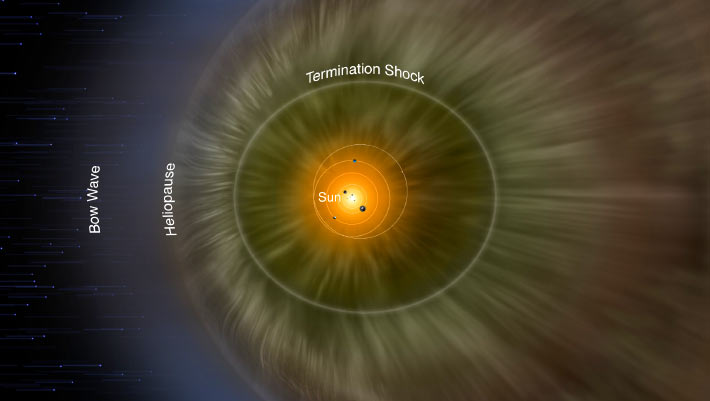
IBEX Produces 3D Map of Heliosphere | Space Exploration
Astronomers using NASAs Interstellar Boundary Explorer (IBEX) satellite have mapped the boundary of the heliosphere, the vast region of space surrounding the Solar System that is filled with the solar wind.Reisenfeld et al. mapped the heliopause, which is the boundary between the heliosphere (brown) and interstellar space (dark blue). Image credit: NASA / IBEX / Adler Planetarium.The Earth-orbiting IBEX satellite detects particles that come from the heliosheath, the boundary layer between the Solar System and interstellar space.Dr. Dan Reisenfeld from Los Alamos National Laboratory and colleagues used IBEX data to map the edge of this zone — a region called the heliopause.Here, the solar wind, which pushes out toward interstellar space, collides with the interstellar wind, which pushes in towards the Sun.To do this measurement, the researchers used a technique similar to how bats use sonar.Just as bats send out sonar pulses in every direction and use the return signal to create a mental map of their surroundings, we used the Suns solar wind, which goes out in all directions, to create a map of the heliosphere, Dr. Reisenfeld said.They did this by using IBEX satellites measurement of energetic neutral atoms (ENAs) that result from collisions between solar wind particles and those from the interstellar wind.The intensity of that signal depends on the intensity of the solar wind that strikes the heliosheath. When a wave hits the sheath, the ENA count goes up and IBEX can detect it.The solar wind signal sent out by the Sun varies in strength, forming a unique pattern, Dr. Reisenfeld said.IBEX will see that same pattern in the returning ENA signal, two to six years later, depending on ENA energy and the direction IBEX is looking through the heliosphere.This time difference is how we found the distance to the ENA-source region in a particular direction.The team then applied this method to build the 3D map, using data collected over a complete solar cycle, from 2009 through 2019.In doing this, we are able to see the boundary of the heliosphere in the same way a bat uses sonar to see the walls of a cave, Dr. Reisenfeld said.The reason it takes so long for the signal to return to IBEX is because of the vast distances involved.The 3D map shows that the minimum distance from the Sun to the heliopause is about 120 AU (astronomical units) in the direction facing the interstellar wind, and in the opposite direction, it extends at least 350 AU, which is the distance limit of the sounding technique.Physics models have theorized this boundary for years, Dr. Reisenfeld said.But this is the first time weve actually been able to measure it and make a 3D map of it.The results were published in the June 10, 2021 issue of the Astrophysical Journal Supplement Series._____Daniel B. Reisenfeld et al. 2021. A Three-dimensional Map of the Heliosphere from IBEX. ApJS 254, 40; doi: 10.3847/1538-4365/abf658
……Other
Comments
Leave a comment in Nestia App